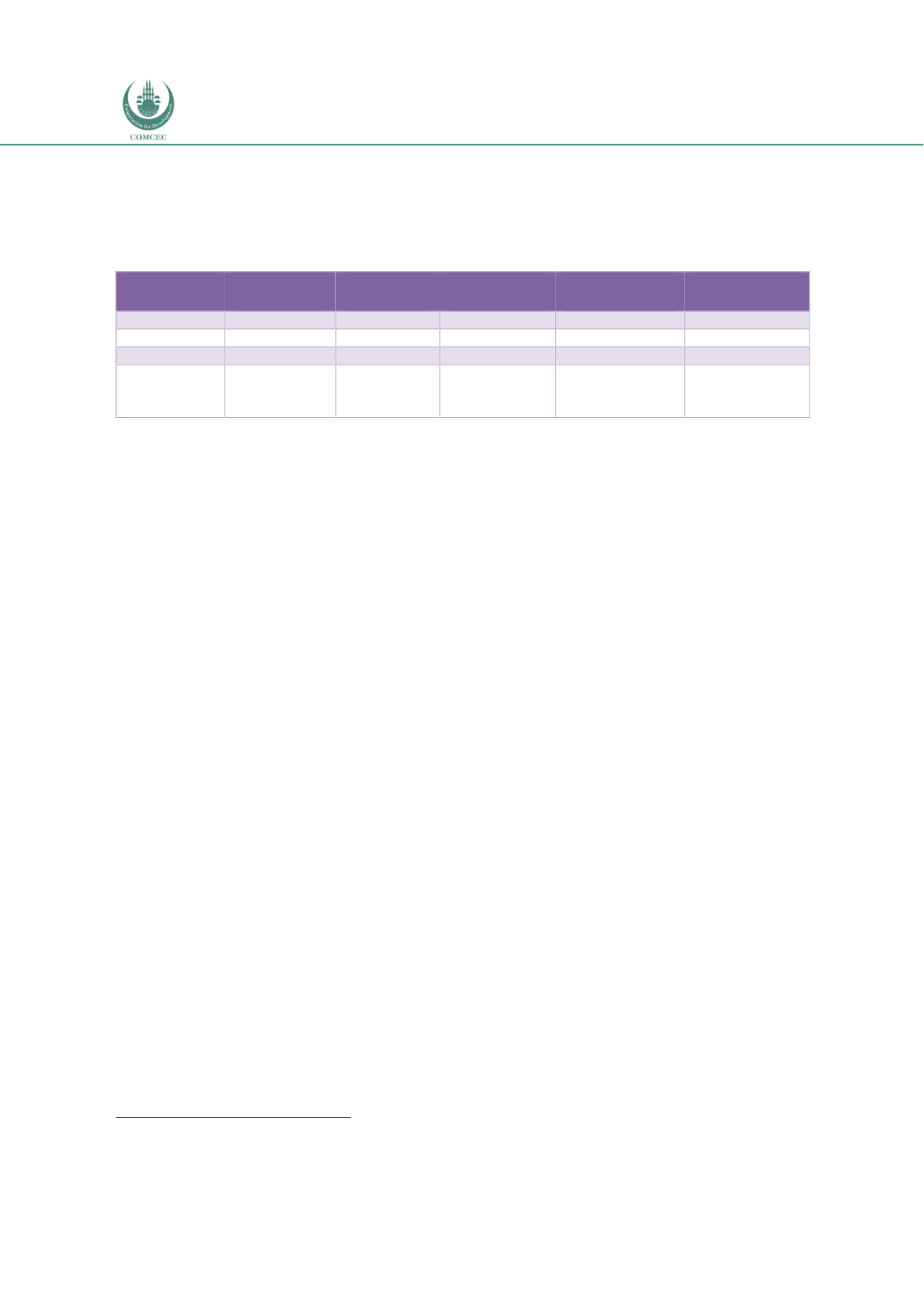

Infrastructure Financing through Islamic
Finance in the Islamic Countries
60
provide funds for the project and the Project Company acts as an agent managing the project.
The investors receive the income generated from the project and the agent gets paid a certain
fee for the services provided. The features and properties of various types of
sukuk
are shown
in Table 3.3.
Table 3.3: Sukuk Types and Features
Sukuk
Types
Underlying
Contract
Risk
Attribution
Nature of
Return
Returns
(fixed/variable)
Tradability
Asset-backed
Leasing
Assets
Rent
Fixed/variable
Yes
Debt
Sale
Obligor
Profit
Fixed
No
Equity
Partnerships
Project
Profit
Fixed/variable
Yes
Investment
Agency
Agency
contract
Project
Profit
Fixed/variable
Depends on
underlying
contract
a-The return can be fixed if the underlying assets of the projects such as real estate yields fixed return.
Source: Ahmed (2017)
The rights and risks that investors face will depend to the nature of sukuk. While most debt-
based sukuk will yield fixed returns, the asset and equity based sukuk can be structured as
variable rates. Similarly, sukuk representing ownership of real assets or usufruct are tradable.
However, if the securities represent debt or money, then they cannot be traded and can only be
exchanged at par value. If securities represent composite debt-equity assets, the rules of the
dominating asset (having 51%) will apply to the hybrid security. This allows obligors to issue
tradable hybrid securities containing the majority of real physical assets or usufruct.
15
As indicated, sukuk represents the second largest sector after banking. The distribution of the
2,437 total number of sukuk outstanding in different regions is shown in Chart 3.13. An
overwhelming number of sukuk (2,029) in 2016 was issued in Southeast Asia and was valued
at USD 206.8 billion, and this was followed by the GCC with 194 sukuk worth USD 111.1 billion.
These numbers indicate that the size of an average sukuk issue in Southeast Asia is relatively
small (USD 102 million) compared to the GCC which had an average sukuk issue of USD 573
million.
15
The
Islamic
Fiqh
Academy has a ruling along similar lines (see Ruling No. 30 (5/4), IFA and IRTI 2000, p. 63). For a
discussion on guidelines for issuing Islamic securities, see Ahmad and Khan (1997) and Khan (1999-2000).
















